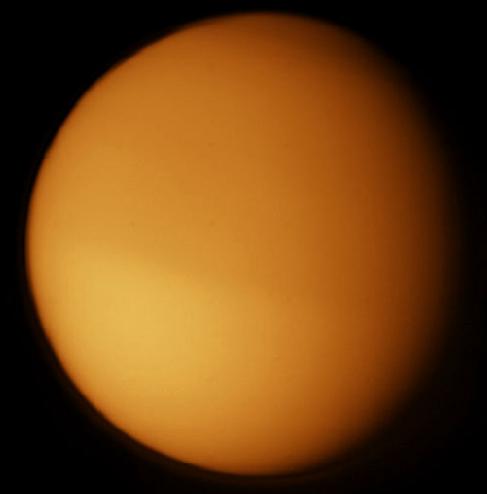|
Titan! |
||

|
Saturnís moon Titan is the largest moon in our solar system, and the only moon in the solar system wit h a significant atmosphere. In Greek mythology Titans were a family of giants, which is were Titan got itís name.
Discovered by Christiaan Huygens in 1655. Voyager 1 came within 4000 km of the surface, the objective of this mission was to find out more about Titan. 2004 Cassini orbiter had a few close encounters with Titan taking data with many different instruments. January in 2005 the Huygens probe landed on the surface and send images back You can see Titan clearly through a small telescope he surface temperature is about 94 K (-290 F) as a little water vapor in the atmosphere Titan has a few clouds at the poles, they came on the southern pole during the summer when it was getting 21 hours of sunlight then they left. It is larger then Mercury and Pluto The surfaces is not entirely coved by liquid and solid materials, there are areas of icy bedrock Huygens landed on Titan in January of 2005. This probe will send back more information then any other previous missions. They hope to find out if there are lakes of liquid methane They want to try and find out if there are any bodies of water Titan is similar to Earth Titanís atmosphere is 95% nitrogen Earthís atmosphere is 78% nitrogen Titan has some hydrocarbon elements which gives Titan itís orange color, but is also the building blocks for amino acids which is necessary for the formation of life Titan exhibits seasonal changes in itís stratospheric temperatures and winds Scientists say that Titanís atmosphere may have similar conditions to what Earth was like before life emerged. Titan might have clues to the early atmosphere on Earth, so studying Titans atmosphere might help uncover those mysteries.
|
